Chasing the Beast
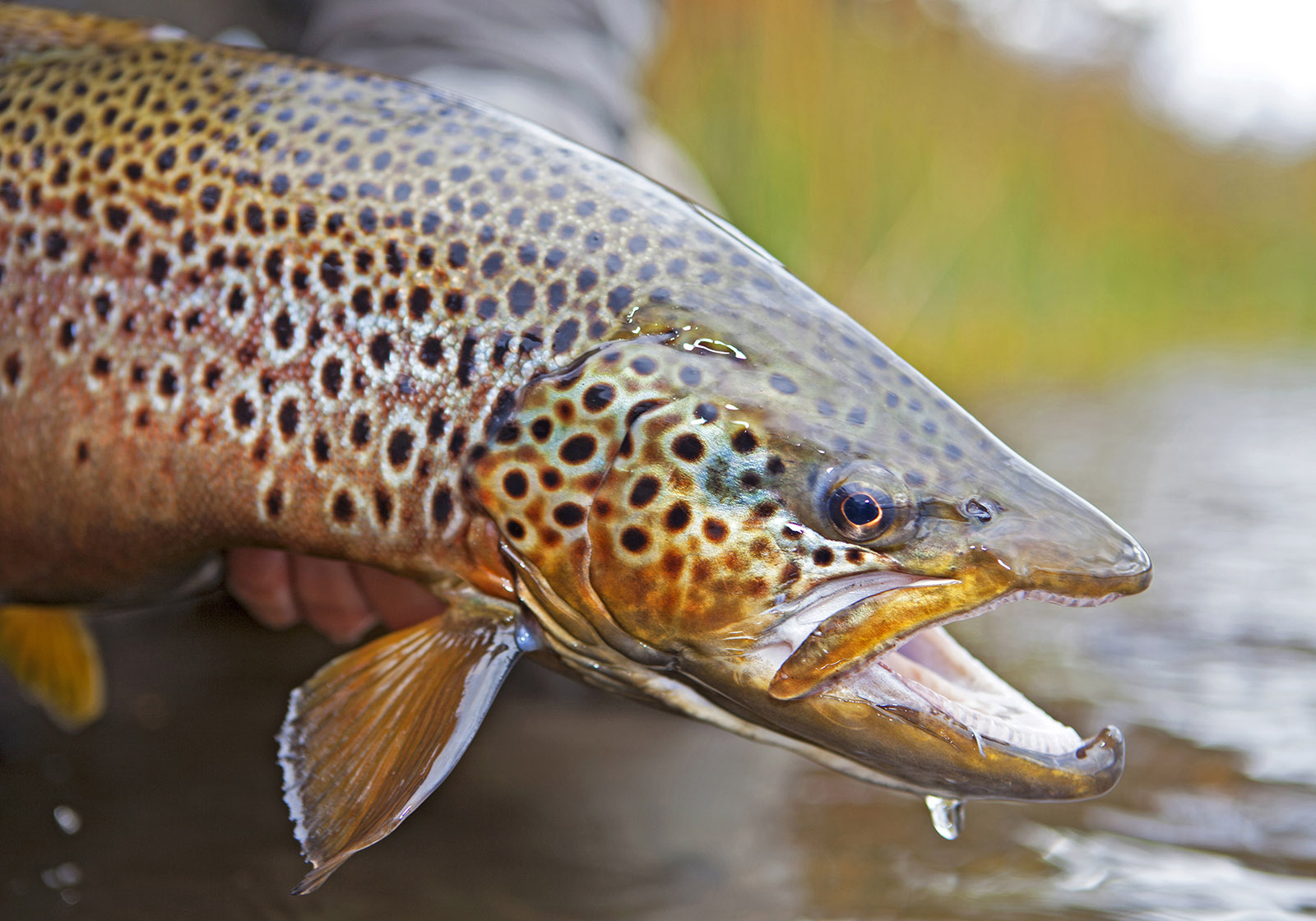
by Pat Straub
Big trout—the monsters of Montana’s rivers, creeks, and lakes—lurk in lairs of undercut banks, deep drop-offs, and driftwood snags. They hold in those places where a good cast is earned and where small trout dare not swim. Is it coincidence that Halloween, the time of mutants and monsters, occurs during big-fish season? Or Thanksgiving, with its titanic appetites and mammoth-sized meals? Indeed, fall is the season of the beast.
By most Montana standards, a big trout is one over 20 inches long. For fish to grow to this size, they need plenty of cold water and quality habitat—which the Treasure State has in abundance. This fall season, tag your Montana monster with some of these tips & tricks.
Think like a predator.
Fall is when large trout shift from gatherers to hunters. With low streamflows, the available water for smaller fish to escape to is limited. But just as little fish feel like there is always something bigger than them in or above the water, bigger fish feel the same way—and you are that bigger fish. Approach the water slowly, and walk softly on the bank. Be sure your shadow does not cast onto the surface.
Time of day is important, but not a deal-breaker.
When it comes to big trout in the fall, the early bird doesn’t always get the worm. The opposite is often the case. As the nights get longer and cooler, water temperatures drop as well. Weather patterns and available sunlight play larger roles than time of day for targeting big trout. Fish tend to be light-sensitive, so overcast days or diurnal hours are good for targeting large specimens. A sudden weather change may also slow a big fish’s desire to feed; it may also squelch a hatch or dampen the movement of smaller fish.
Target the right areas.
Because big trout are predators, you should fish areas where these large trout can ambush your fly—drop-offs, cutbanks, bankside structure, even a shallow riffle. As the length of daylight grows shorter each day, shadows from bank structure linger longer. Fish in and along these shadows to entice a predatory strike.
Embrace and refine your streamer fishing.
Most big-fish fanatics are adept streamer anglers as well. When fishing streamers, the retrieve—or lack thereof—is crucial. Experiment with slow strips, then fast strips, and a variety of twitches to imitate an injured baitfish. If fishing a drop-off or an undercut bank, cast above the drop-off or even on the bank. Cast upstream, then add a very small downstream mend in the fly line to create an elongated curve in the fly line. Allow the current to provide the downstream movement, as that presents the fly in a natural manner.
Choose a fly with eyes and contrasting colors.
Eyes allow for a predator to focus on something, and contrasting colors create a variation on which a larger fish can target. Most trout have a variety of colors on their bodies, and trout eat trout. So, choose a fly that imitates the available food source.
Don’t ignore the small stuff.
Big flies and streamers get most of the attention in the fall. When a thick hatch occurs and big flies stop working, you’ve got to match the hatch. That often means you need to cast better, get a better drift, and use a more lifelike pattern. You just need to fish better. Fishing better doesn’t happen immediately. When big fish flip the narrative and get selective, understanding the the nitty-gritty—fly selection, insect life cycles, micro-drag, deep- and sight-nymphing, floatants and dessicants, leader length, tippet size and rise forms—will result in more big fish to hand.
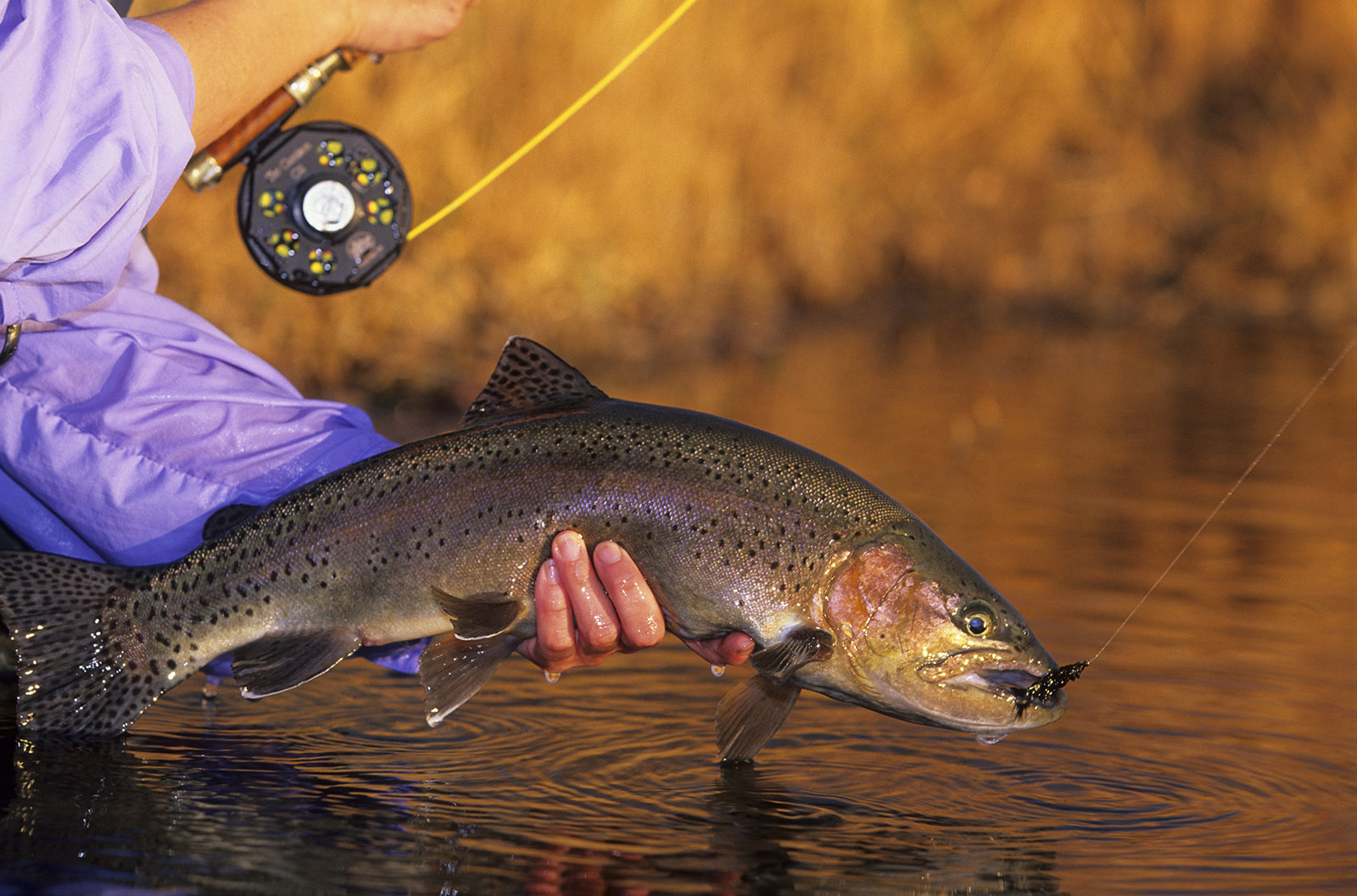
More Big-Fish Tips & Techniques
Learn a Reach Cast and Access More Water
When targeting big fish, a reach cast is helpful because it keeps the line from floating downstream before the fly. It allows a streamer to land tight to the bank with the line upstream, keeping the fly in position longer. After you stop the rod on your forward cast, create an extended follow-through by allowing your arm to cross your body. This puts a mend in the line before it even lands on the water.
Use Fluorocarbon Leaders & Tippet
Monofilament and fluorocarbon are the primary types of leader and tippet material. When targeting big fish subsurface—using streamers or nymphs—always choose fluorocarbon. Fluorocarbon is more abrasion-resistant than monofilament, is stronger with less diameter, and doesn’t lose strength with prolonged UV exposure. When fishing on the surface with dry flies, monofilament is desired because fluorocarbon tends to sink more quickly.
You hooked a behemoth. Now, fight it properly.
Big fish are large for a reason—they don’t put up with any shit. When hooked, a large fish will fight for its life. Be ready, but also be patient. First, make sure the hook is set with purpose, using either a strip-set when streamer-fishing, or a deliberate rod-tip set if dry-fly fishing. If the fish wants to run, let it run, but keep some sideways or downward pressure against the direction of the run. During this time, it’s crucial that your rod tip is allowed to bend. When you feel the fish begin to ease its fight, apply increasingly stronger pressure, and reel in line in between bouts of pressure. At any moment, be ready to let the fish run again. It’s also a good idea to switch the angle or direction of pressure during the fight. This helps to tire and disorient the fish more quickly. When you can easily switch the angle or direction of pressure, the fish is ready to land. To gain control of a big fish for landing, bring its nose and eyes slightly out of the water—if you can do this close enough to slip a net under the fish, you’ve got it!
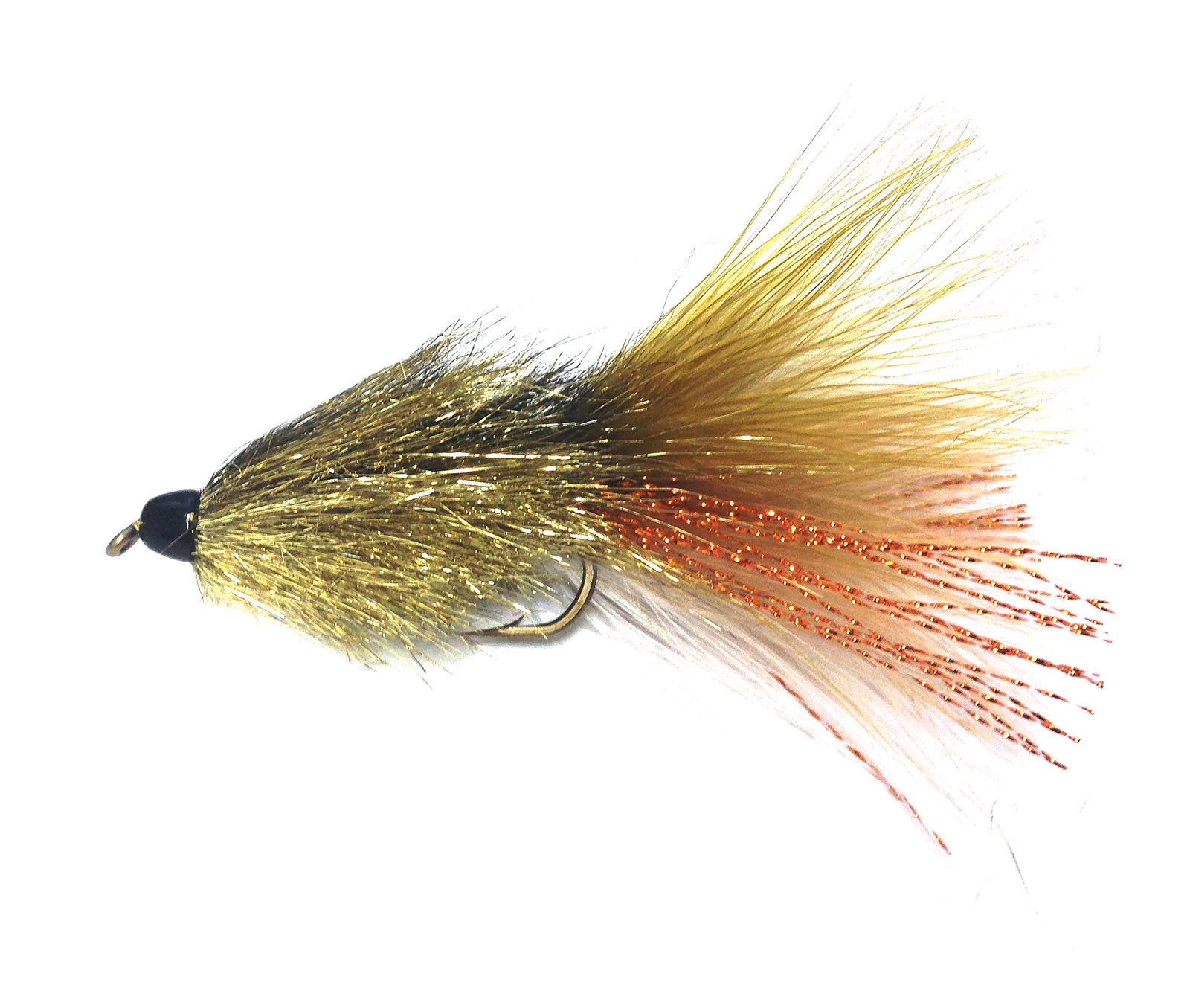
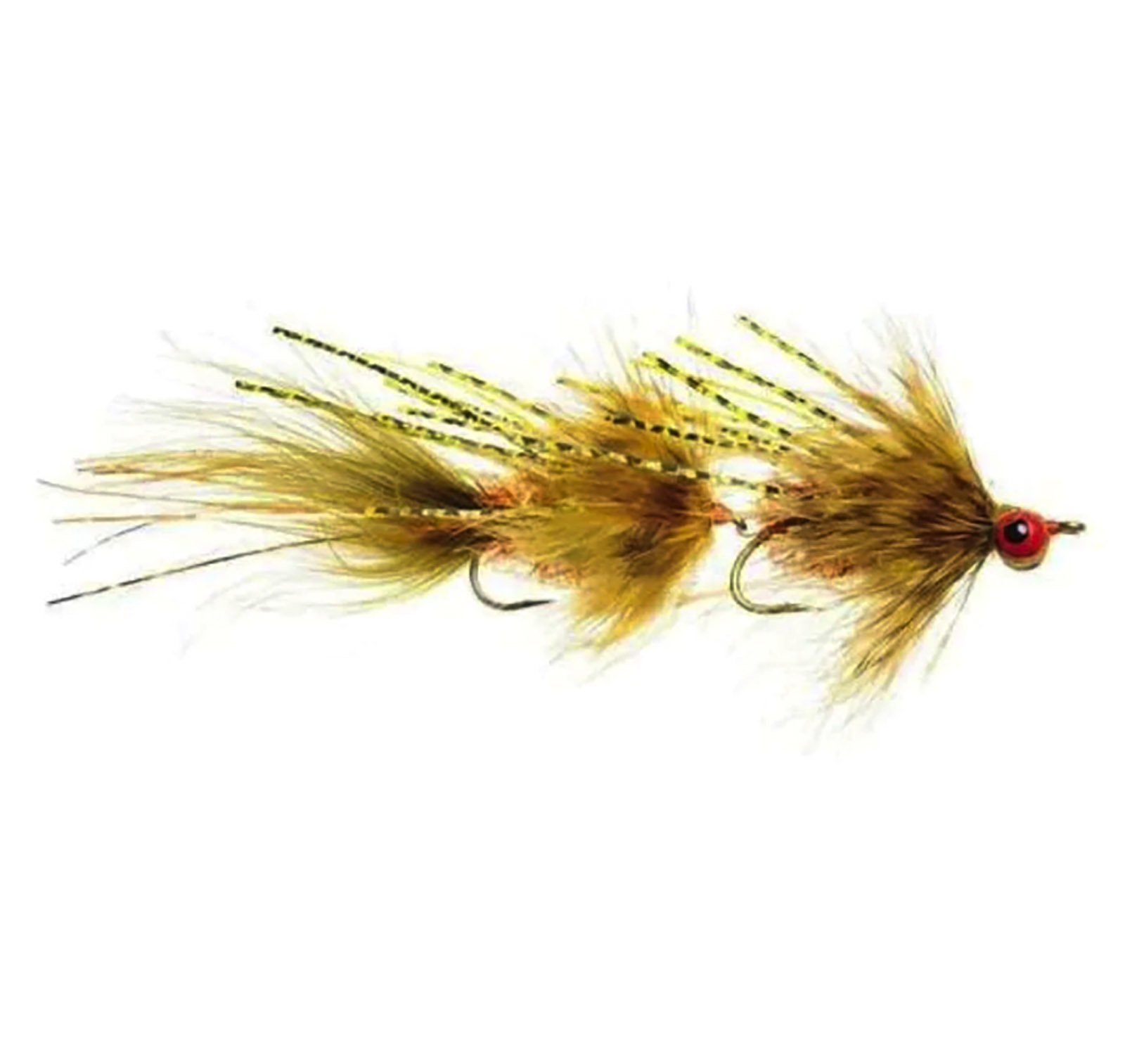
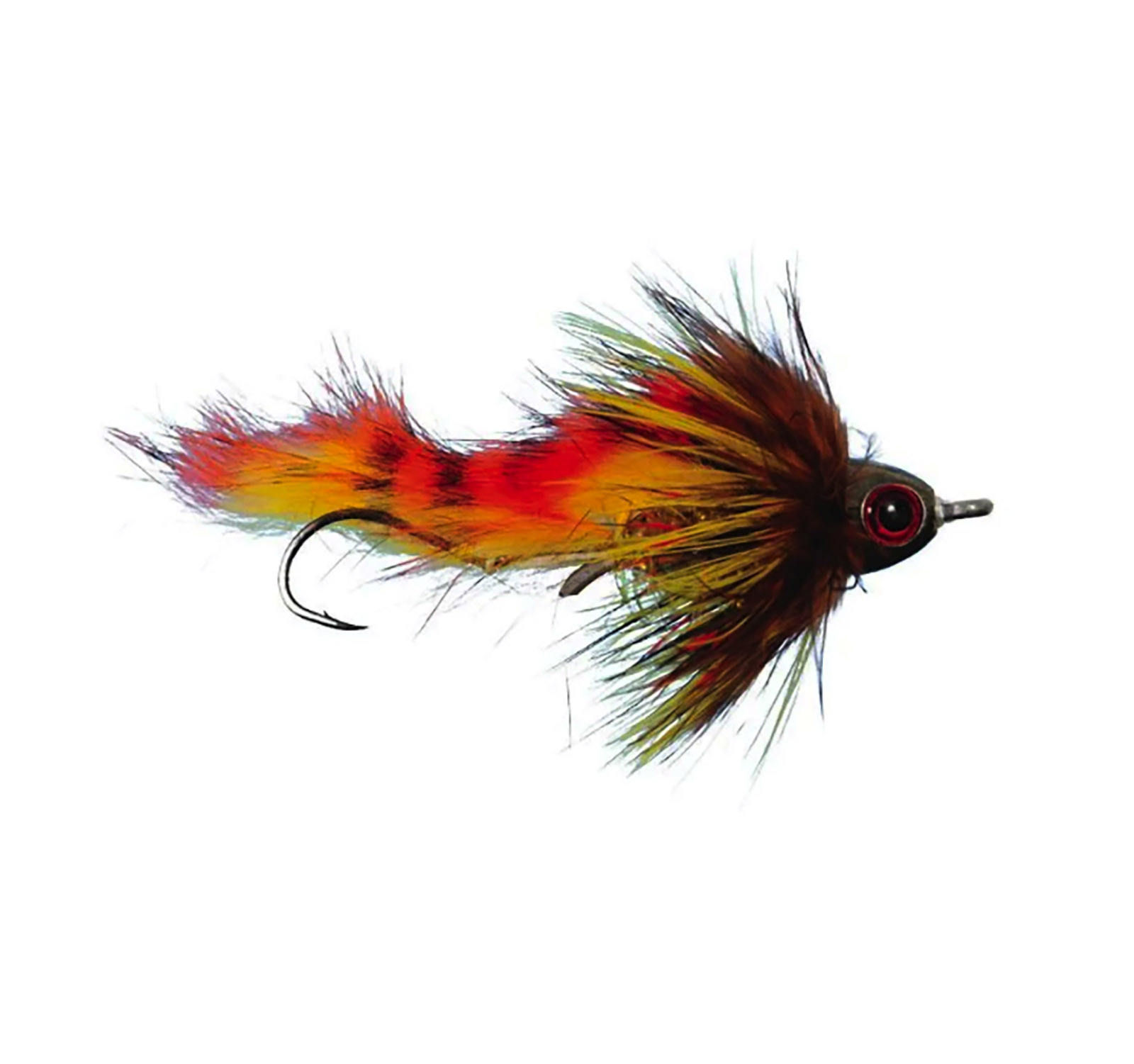
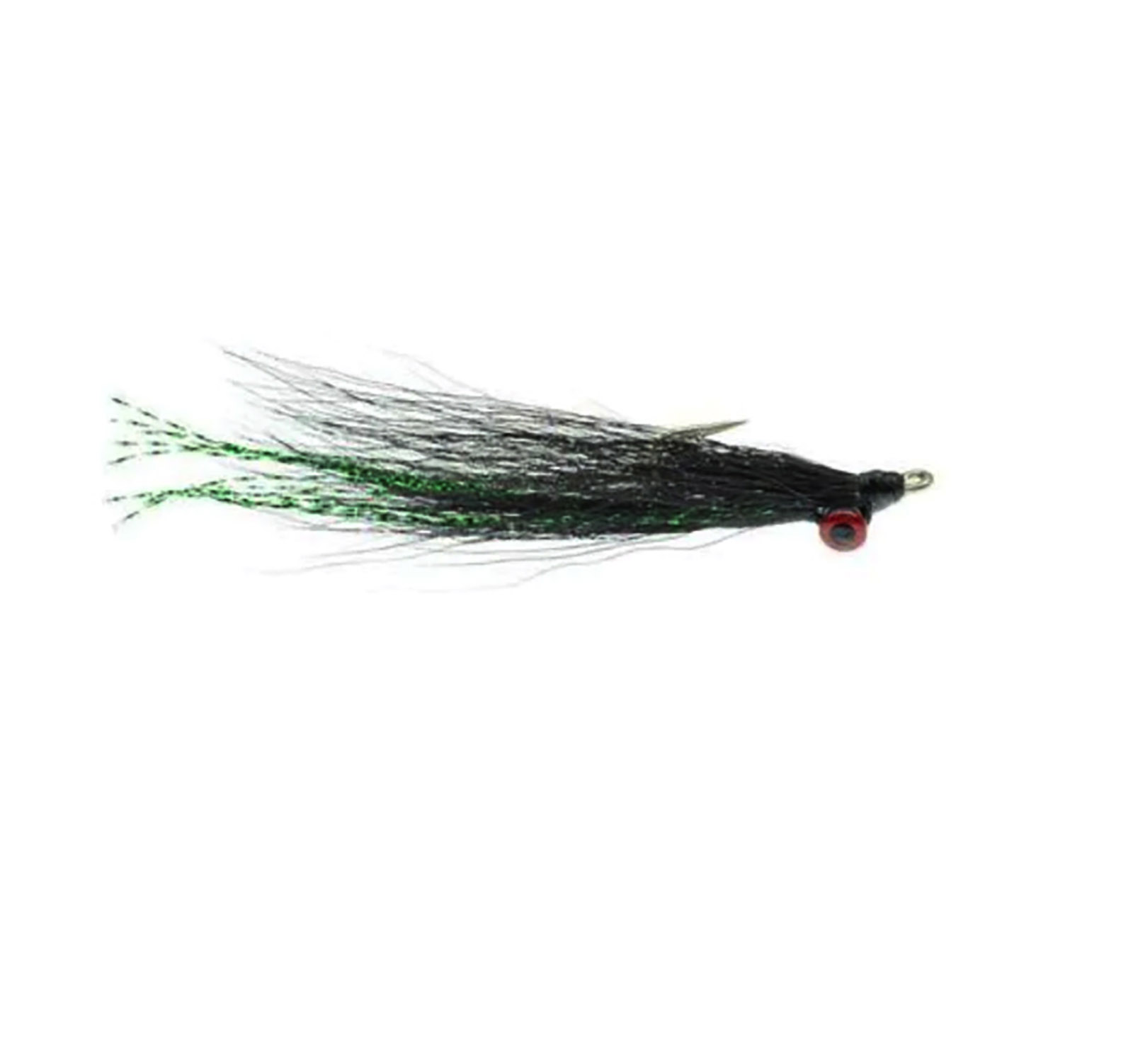
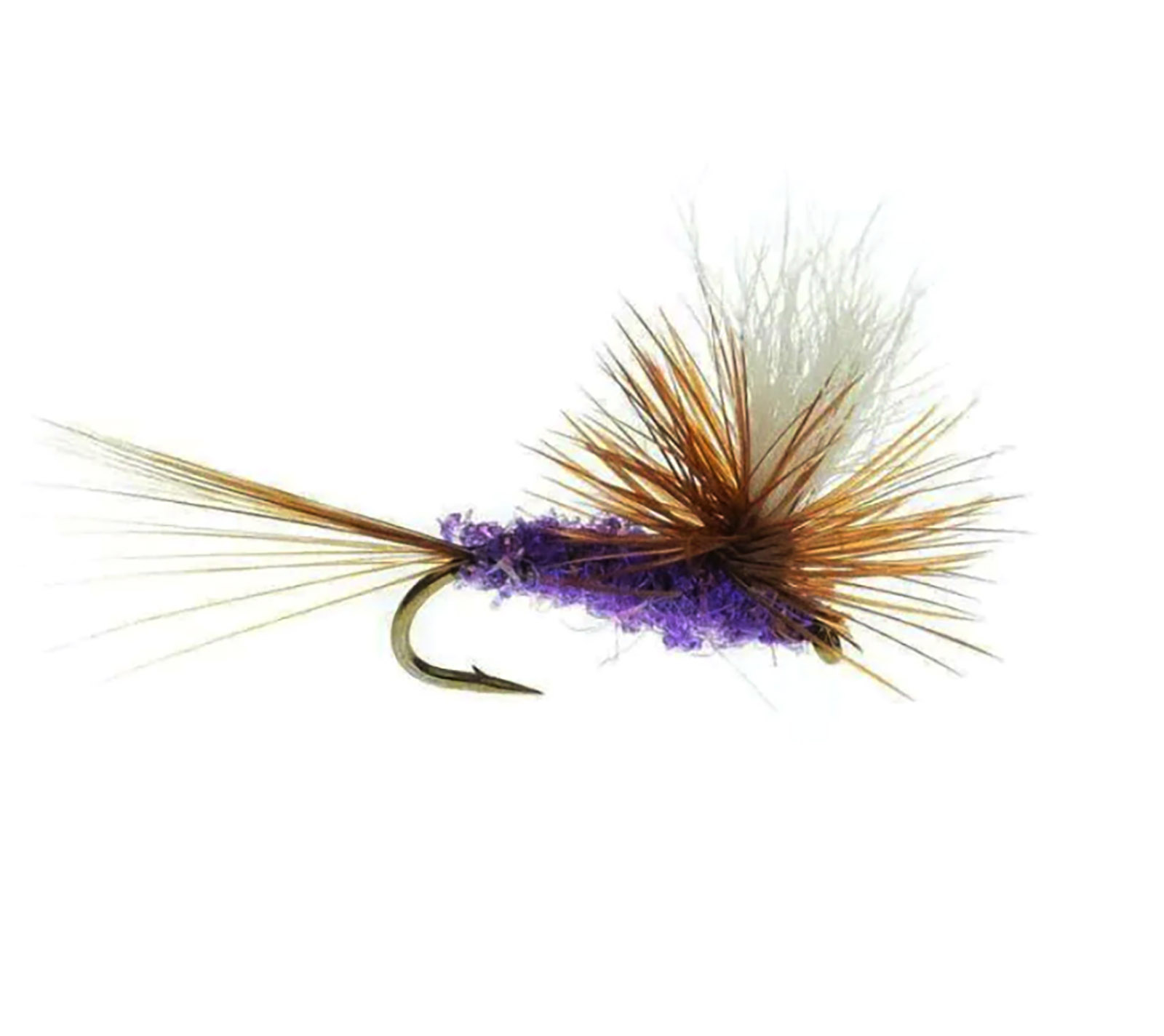
Top Flies for Big Fall Trout
Coffey’s Sparkle Minnow – Few flies look as realistic as this when stripped through the water. With ice dubbing in flashy colors and a conehead, the Sparkle Minnow is akin to a Woolly Bugger on a Vegas binge. Best stripped or swung, this pattern is responsible for many personal bests.
Sculpzilla – Aptly named for the season of the monster, this fly imitates injured prey. With an articulated hook, Sculpzilla is best fished single, as the articulation creates havoc for trailing flies tied to the bend of the hook. Created by big-fish-finder Kelly Galloup, this fly should be in your box all season long.
Circus Peanut – Also created by Galloup, this fly is a treat for anglers but a nasty trick for big trout. With articulation, large dumbbell eyes, stinger hooks, and rubber legs, the Circus Peanut has it all and is surely responsible for many damaged egos of hundreds of large brown trout.
Clouser Minnow – Very simple, yet very effective, the Clouser Minnow imitates a variety of baitfish. With oversized eyes and the ability to be tied in several color combinations, the Clouser Minnow often works when other patterns don’t.
Parachute Purple Haze – The lone non-streamer on the list, this dry fly is ideal if large fish switch from predatory mode to forager mode. If you spot a selectively feeding large trout, drift one these across its nose and the take may very well put a spell on you.
